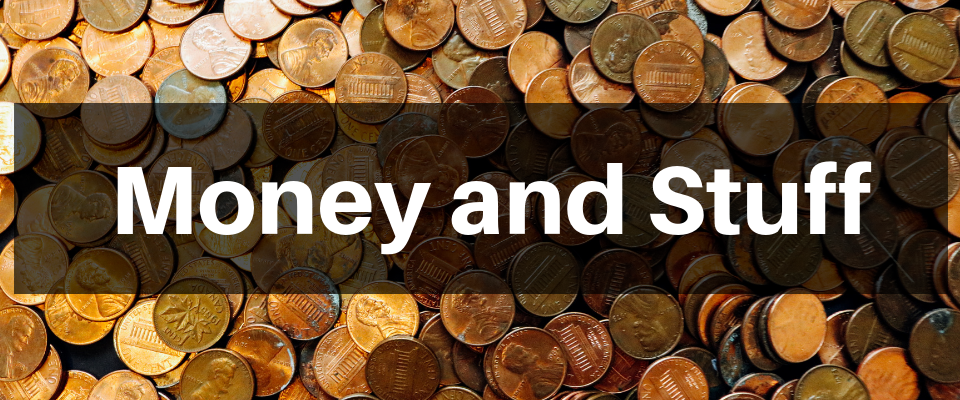Thursday, March 10, 2016
Why do variable rates exist?
Have you ever wondered why savings accounts and most loans have variable interest rates? Why aren't there fixed rates any more?
The reason for this goes back in America's cooperative history.
A hundred years ago most banks offered fixed rates for everything, loans and deposits. Back then checking accounts didn't earn interest at all, and most people kept their funds in savings until needed. After War World II the phenomenon of the baby booms happened, and we had thousands and thousands of servicemen looking for homes for their families near cities, they didn't want to go back out into country life. While banks provided a part of these loans, they were reluctant to lend to people with little or no established credit and low savings, so that was when America's cooperatives, both Credit Unions and Savings and Loans stepped up and started making huge numbers of loans. It was a real boom. The Eisenhower administrations built the highway and interstate roadwork, and millions of people moved into the suburbs of America's cities. Suburbia was born. Around 60% of suburbia's mortgages were in the hands of Savings and Loans, with low fixed rates.
Savings and loans had evolved from the old British Building and Loans, a thrift not-for-profit organization made for and by working men to enable low-income workers access to savings accounts and home loans. They believed not just in Cooperative principles but also that they were part of social reform in the banking industry.
Then the 60s and 70s happened, with inflation and rising interest rates. Banks started attacking the cooperative movement which became gridlocked by regulation. Savings and Loans and Credit Unions were under huge regulatory burdens and were having huge problems staying afloat. When rates went up, banks had the upper hand because existing regulations allowed them flexibility in their rates while it placed certain ceilings on the deposit rates of Savings and Loans; with rates up, people would take out their savings from the S&Ls and take them to banks. So, Savings and Loans were left with little in the way of deposited funds, and millions upon millions in low fixed-rate mortgages.
Then, in 1979 the Federal Reserve doubled the prime rate overnight. This means that Savings and Loans lost their deposits to banks, and that the price they had to pay for funds from the Fed would be over twice as high than the rate at which all of their fixed-rate loans ware set. Their hands were tied, and it was an absolute disaster. Between 1979 and 1995 one third of America's Savings and Loans simply disappeared. They could not survive the over-regulation not the little interest income they received from their fixed-rate mortgage l oan portfolio; they were swimming with the sharks, and couldn't stay afloat. There were other factors involved in some cases, corruption chief among those, but the inability to adjust their rates when needed was the ultimate reason. Savings and Loans still exist today but they are relatively few, and their benefits have been overshadowed by the banking and credit union offers.
After the Savings and Loans went belly-up everywhere, it became clear that the fixed rate system did not really adapt fairly to a Federal Reserve that could change its rates whenever they liked. That is why from then on, most institutions offered many deposits and loans on variable rates, and most of the time those were officially or unofficially linked to the Prime Rate
Was that the end of fixed rates? No, not at all. Fixed rates exist, yet because financial institutions cannot afford to risk all of their loan portfolios on specific unchangeable rates in a world where the Prime may change any day, they commonly set aside specific portions of their loan portfolio to grant fixed-rate loans. And because they signify a risk that the financial institution is taking, they are usually offered to people whose payment history and credit worthiness are outstanding, people in whom they know they can trust.
Such is the case as with OAS FCU's limited fixed rate car loan. They have a limited amount of money that they can lend at this special low rate; if you know that you have outstandingly good credit, now's the time to lock in that rate for your new set of wheels. The rate is listed here and you can ask the Credit union about it by emailing them at oasfculoans@oasfcu.org.
Additionally, they also have a signature (unsecured) loan for members with good credit, which has a payment term of 2 years; it can be used for small home remodeling, vacations, to pay off and consolidate large interest debts, whatever you like. You can find more about it here.
Labels:
banks
,
credit unions
,
fixed rates
,
regulations
,
savings and loans
,
variable rates
Subscribe to:
Post Comments
(
Atom
)



No comments :
Post a Comment